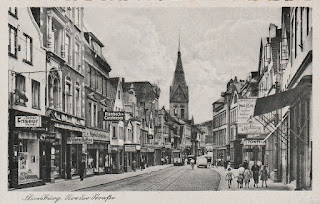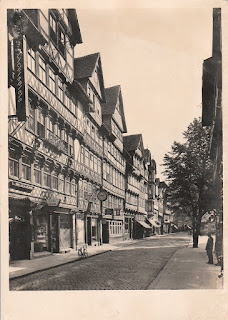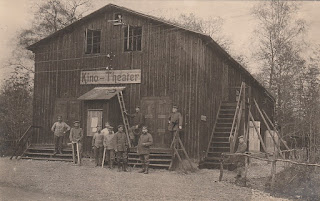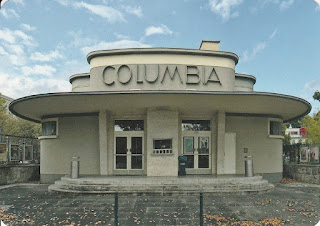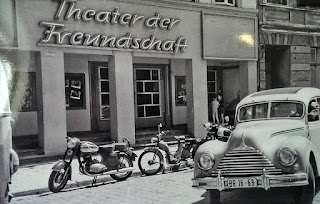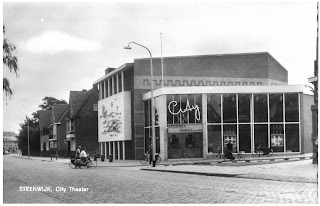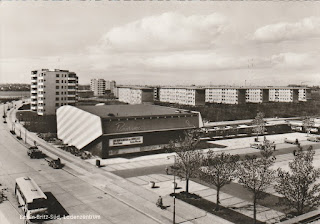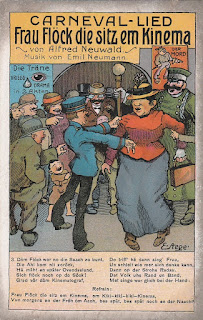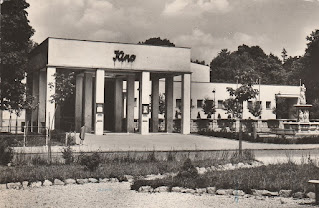In 1967, the city Qaraghandy / Karaganda received a new wide-format cinema with 840 seats. The opening was in the same year with the 50th anniversary of the Great October Socialist Revolution and hence the name Yubileiny - Anniversary.
The first premiere was the film Свадьба в Малиновке / Wedding in Malinovka - the first Soviet color, wide-screen film, directed by Andrei Tutyshkin in 1967. The musical comedy is about a Ukrainian village during the time of the Russian Civil War. With power alternating almost daily between Soviet and Ukrainian nationalist forces, the villagers of Malinovka are never sure who is in charge, so they modify their behaviour and dress accordingly.
In July 2013, in the village of Malinovka (Kharkov region) a monument to the hero of the film, Adjutant Popandopulo, was erected. I love film monuments (and postcards with this item).
In 1997, the Munira company bought the Yubileiny cinema. During the period of the crisis of film distribution, which coincided with the general economic crisis, when the city’s cinemas were sold and converted into nightclubs and casinos, the Yubileiny cinema not only did not stop working, but was one of the first in Kazakhstan to engage in the revival of cinema screening.
From 2012 to 2015 the cinema was completely rebuilt. A modern cinema complex with 7 screens was built around the old cinema. The
Yubileiny cinema became one of the best cinemas in the country, meeting high international standards.
Andreas Praefcke writes on his
Carthalia-Website about this cinema: "This standard design by M. P. Bubnov, V. V. Lazarev, I. V. Semeikin, E. B. Ter-Stepanov and V. G. Nemirovsky was used for many cinemas in the Soviet Union, among them Kinoteatr Soyuz in Aleksin, Kinoteatr Gorizont in Chaikovsky, Kinoteatr Ural in Chelyabisnk, Kinoteatr Udokan in Chita, Kinoteatr Donetsk in Donetsk, Kinoteatr Rossiya in Dzerzhinsk, Kinoteatr Burevestnik in Gelendzhik, Kinoteatr Yubileiny in Grozny, Kinoteatr Sovremennik in Ivanovo, Kinoteatr Kosmos in Kaluga, Kinoteatr im. O. Dovzhenka in Kharkov, Kinoteatr Salyut in Kharkov, Kinoteatr Nivki in Kiev, Kinoteatr Komsomolets in Mariupol, Kinoteatr Murmansk in Murmansk, Kinoteatr Ekran in Novotroitske, Kinoteatr Orsk in Orsk, Kinoteatr Shipka in Samara, Kinoteatr Parma in Syktyvkar, Kinoteatr Druzhba in Sumy, Kinoteatr im. Valikhanova in Taraz, Kinoteatr Iskra in Ufa, Kinoteatr Rossiya in Vinnytsia, Kinoteatr Yubileiny in Volgograd, Kinoteatr Volga in Yaroslavl."


